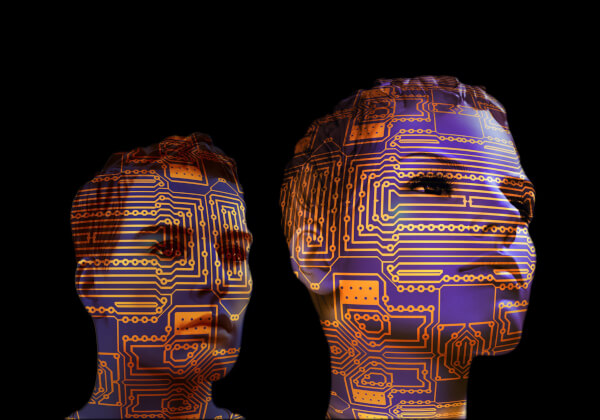Quantum Computer – Impacts on Tax Administration at first glance

Quantum computing recently stopped being just a buzzword to become something real. Several companies, such as Google, announced research and experimental products, but IBM introduced at the beginning of the year the first integrated commercial quantum computer – the IBM Q – and released a platform of access to the system for all concerned, through the cloud[i] .
This article is not intended to explain the fundamentals of quantum physics, the origin of these new technologies. In the end, these principles are complex and differ widely from the classical interpretation of the universe, in which we were all trained: even a genius like Einstein had with this discipline a love-hate relationship. (He proposed the basic principles of particle physics but refused to accept the consequences of these concepts in explaining the phenomena of the universe) [ii]
In this analysis, we start from certain principles of quantum physics that enable the development of these computer technologies and evaluate, on preliminary examination, its potential impacts on some issues of interest for tax administrations.
- quantum computers – definition exploration
According to Gartner glossary, a quantum computer uses atomic quantum states to perform the calculation. Data is maintained in qubits (quantum bits), which have the ability to keep all possible states simultaneously. This property, known as “superposition“, gives quantum computers the ability to operate exponentially faster than conventional computers with increasing length of the word. The data stored in qubits are affected by the data held in other qubits, even when they are physically separated. This effect is known as “interlacing“[iii] .
The properties of overlapping and intertwining are fundamental in quantum theory and may be better known in[iv],[v]
As an example, a quantum computer 5 qubits can have 25 simultaneous states, i.e. 32. However, certain characteristics related to quantum computing generate internal errors (called “decoherence “) and certain amount of reserve of physical qubits may be necessary to find and correct them, which would reduce the net throughput. It reaches, then the “quantum volume “), a metric that measures the efficiency of a quantum computer and considers, in particular, the number of qubits, connectivity time and consistency, internal errors, efficiency of the software circuit .
Another interesting concept is the “quantum advantage ” simply defined as the time from which a quantum computer is able to solve an algorithms that a classic computer fails to solve[vi] .
- Current development
The implementation of the IBM quantum computer will be used as example. This implementation is done with superconductors and resonators (short wave resonators microwaves) – the latter used for addressing and linking the system. The system must work immersed in a cryogenic environment that maintains temperatures near absolute zero[vii] : 0.015o K or -273.13o C. Colder than outer space!
The IBM Q commercial computer occupies a huge room, and can be compared (in physical dimensions) to ENIAC, the first among the classic commercial computers.

Figure 1: ENIAC (1946) x IBM Q (2019)
Source: own montage photo from Wikipedia and IBM
The IBM Q, of 5 qubits, is accessible for who wish to perform testing. Access is through the cloud in an environment called “IBM Q Experience”, where the rules for access log, tutorials and specific tools for quantum computing are available[viii].
A new model of 20 qubits was recently presented. In addition, IBM reported that this computer has a “quantum volume” 16 qubits, representing an increase of efficiency relative to previous models[ix] .
Other companies and research institutes/universities develop quantum computers, with different implementation technologies that are still in experimental phase such as Google, Lockheed Martin, and NASA. In addition, the UK and China are known for the development of quantum computers projects.
- Main opportunities and impacts on issues of interest to the Tax Administrations
Not all applications are able to harness the power of exponential processing of quantum computers. Problems related to optimization (e.g. the traveling salesman problem[x] ) and the study of chemistry (chemical phenomena forecast, widely used in drug research) are suitable for quantum computing treatment. Currently, these problems require the use of supercomputers and take long processing times.
In addition, some technologies of great interest to modern tax administration are also affected by quantum computing, as we will discuss below.
- 3.1 Cryptography and PKI[xi]
Quantum cryptography computing brings challenges and opportunities. A recent article [Walldén & Kashefi, 2019) discusses this topic, with the following key ideas:
– Quantum computers will represent an important cyber security threat. When powerful quantum computers are built, the cryptographic systems currently most widely used will break. Therefore, dealing with this threat is crucial and timely. The most critical scenario is when a classic computational scheme is attacked by an adversary who has access to quantum technologies. According to the authors, it is important to address the problem immediately because: a) security can be broken in retrospect, like someone intercepting and storing current encrypted messages and within ten years, with the use of quantum computers, decipher them. b) The development of solutions to this problem will require years of investment and investigations by different groups; c) Changing the cryptographic infrastructure will take years, after choosing the solution.
– Standard protocols can be protected against adversaries equipped with quantum technology, but this requires special care that goes beyond a careful choice of cryptosystems. The most important area of research is to assert that the safety of protocols used is based on computations that are still difficult, even for quantum computers.
– Quantum technologies will also have a positive impact on cybersecurity. Quantum devices with the current top-notch technology can be used to improve safety by achieving the impossible tasks to date, including the expansion of secret key with perfect safety.
Asymmetric cryptography and PKI are now fundamental to the security schemes of tax administrations, thus justifying the need to accompany the evolution of this issue.
- 3.2 Big Data
Big Data is one of the areas that would most benefit from the union between artificial intelligence and quantum computers.
Powerful quantum processors could handle massive data sets, and artificial intelligence could analyze these large data sets at a granular level. An example of quantum computing applied to Big Data tasks is related to the integration of different data sets, with the support of machine learning techniques, as presented below.
When there are different sources of raw data with a single schema associated with them (terminology and column header) and a team of technicians wishes to compare them, a computer would have to understand the relationship between the schemes before they can compare the data. To achieve this, the use of natural language semantics is necessary, applying the algorithms available in artificial intelligence. Additionally, the system could be trained machine with learning techniques to act only in the future [Marr, 2017].
Knowing the relationships and taking advantage of the speed of these computers, the integration of data sets would be provided, and would be prepared to implement more refined artificial intelligence techniques. Similar preparatory processes are also applicable to the Big Data of tax administrations.
- 3.3 Artificial Intelligence
There is a great expectation that the expanded power of quantum computers can create significant advances in artificial intelligence, especially because these computers will achieve capturing huge datasets by searching for patterns or abnormalities very quickly. Researchers at MIT (Massachusetts Institute of Technology), University of Oxford and division Q of IBM, published a paper in Nature[xii] detailing an experience to show how quantum computing could accelerate the learning of machines.
Machine learning is mainly used for data classification. Thus, from the huge amounts of data available, you can get better performance to improve the classification of these specific features. The mapping feature allows the “dismantling” of the data, in order to access a finer granularity, for example, to distinguish image features of a cat and a dog. The goal is to use quantum computers to create new classifiers that generate maps of more sophisticated data. In doing so, researchers can develop a more effective artificial intelligence, for example, can identify patterns that are invisible to classical computers. Mapping characteristics could be applied to structures of highly complex data, on a scale far beyond the reach of the most powerful classical computers.
In addition, it would more accurately classify the data because misclassification may introduce undesirable results, such as impair the ability of medical devices to identify cancer cells in mammography data [Temme & Gambetta, 2019)
At the same time, a major obstacle to neural networks – one of the techniques used for machine learning – is the time it takes to empower them to make decisions. It is common to spend weeks, even months, training a neural network due to lack of computing power. Thus, it is intended to harness the power of quantum computers to process information significantly faster than traditional computers speeds. However, it is not as simple as transferring an existing code from a CPU to a quantum processor: the programs must be reworked to take advantage[xiii] of the quantum system.
Such improvements would contribute more effectively to all business models that use artificial intelligence, including the tax administrations.
- Comments
Does IBM Q represents the dawn of commercial quantum computing? Some experts believe that not yet. Among them, a professor at the University of Sussex judges that this prototype allows testing and developing programs that could be useful in the future. It could[xiv] be seen as a springboard for a practical computer.
Still, this development strengthens research and investment in these technologies, alleviating the timeline for the delivery of commercial products. Some optimists believe that the “quantum advantage” will be achieved, for some implementations, from 2020.
Like any disruptive technology, it is good to know and be prepared to seize it at the right time and avoid being run over by it.
— X —
BIBLIOGRAPHIC REFERENCES
[Marr, 2017] Marr, B., “How quantum computers will revolutionize artificial intelligence, machine learning and Big Data”, published on 05.09.2017, https://www.forbes.com [Temme “Researchers put machine learning on path to quantum advantage , ” IBM Research Blog, accessed 3/30/2019 https://www.ibm.com/blogs/research/2019/03/machine-learning-quantum-advantage/ [Wallden & Kashefi, 2019] Wallden, P., Kashefi, E., “Cybersecurity in the quantum era”, Communications of the ACM, Vol. 62, No. 4, April 2019[i] https://newsroom.ibm.com/2019-01-08-IBM-Unveils-Worlds-First-Integrated-Quantum-Computing-System-for-Commercial-Use
[ii] https://blogs.scientificamerican.com/observations/einstein-and-the-quantum/
[iii] https://www.gartner.com/it-glossary/quantum-computing
[iv] https://es.wikipedia.org/wiki/Superposición_cuántica
[v] https://es.wikipedia.org/wiki/Entrelazamiento_cuántico
[vi] https://mytechdecisions.com/it-infrastructure/quantum-advantage-has-been-achieved-heres-what-that-means/
[vii] Absolute zero: 0 or K or 273.15 or C.
[viii] https://quantumexperience.ng.bluemix.net/proxy/tutorial/full-user-guide/001-The_IBM_Q_Experience/001-Introducing_the_IBM_Q_Experience.html
[ix] https://www.zdnet.com/article/ibm-hits-quantum-computing-milestone-may-see-quantum-advantage-in-2020s/
[x] https://es.wikipedia.org/wiki/Problema_del_viajante
[xi] Public Key Infrastructure
[xii] https://www.nature.com/articles/s41586-019-0980-2
[xiii] https://medium.com/sfu-big-data/quantum-machine-learning-future-of-ai-386fb77f59ca
[xiv] https://www.theverge.com/2019/1/8/18171732/ibm-quantum-computer-20-qubit-q-system-one-ces-2019
4,069 total views, 1 views today
